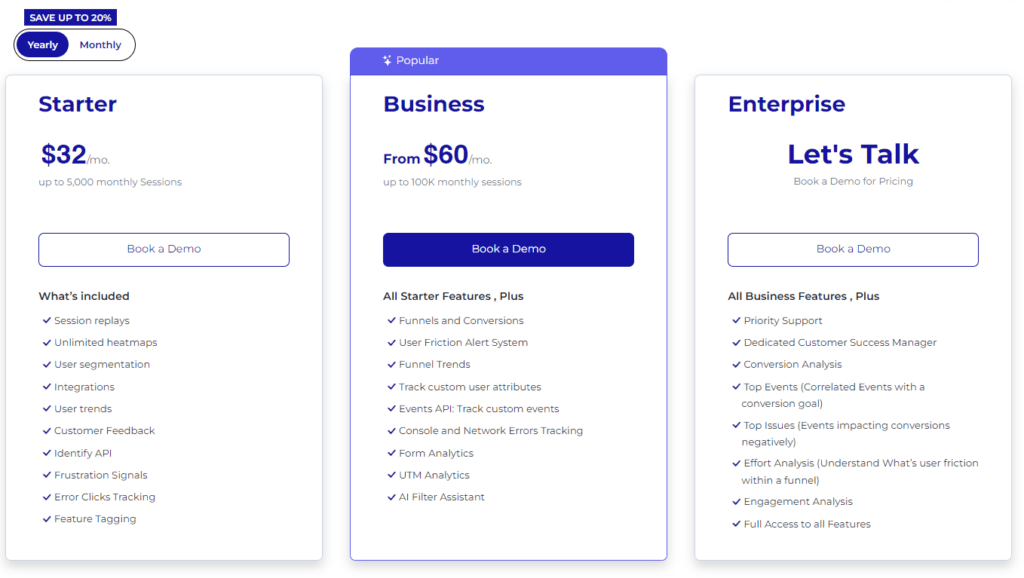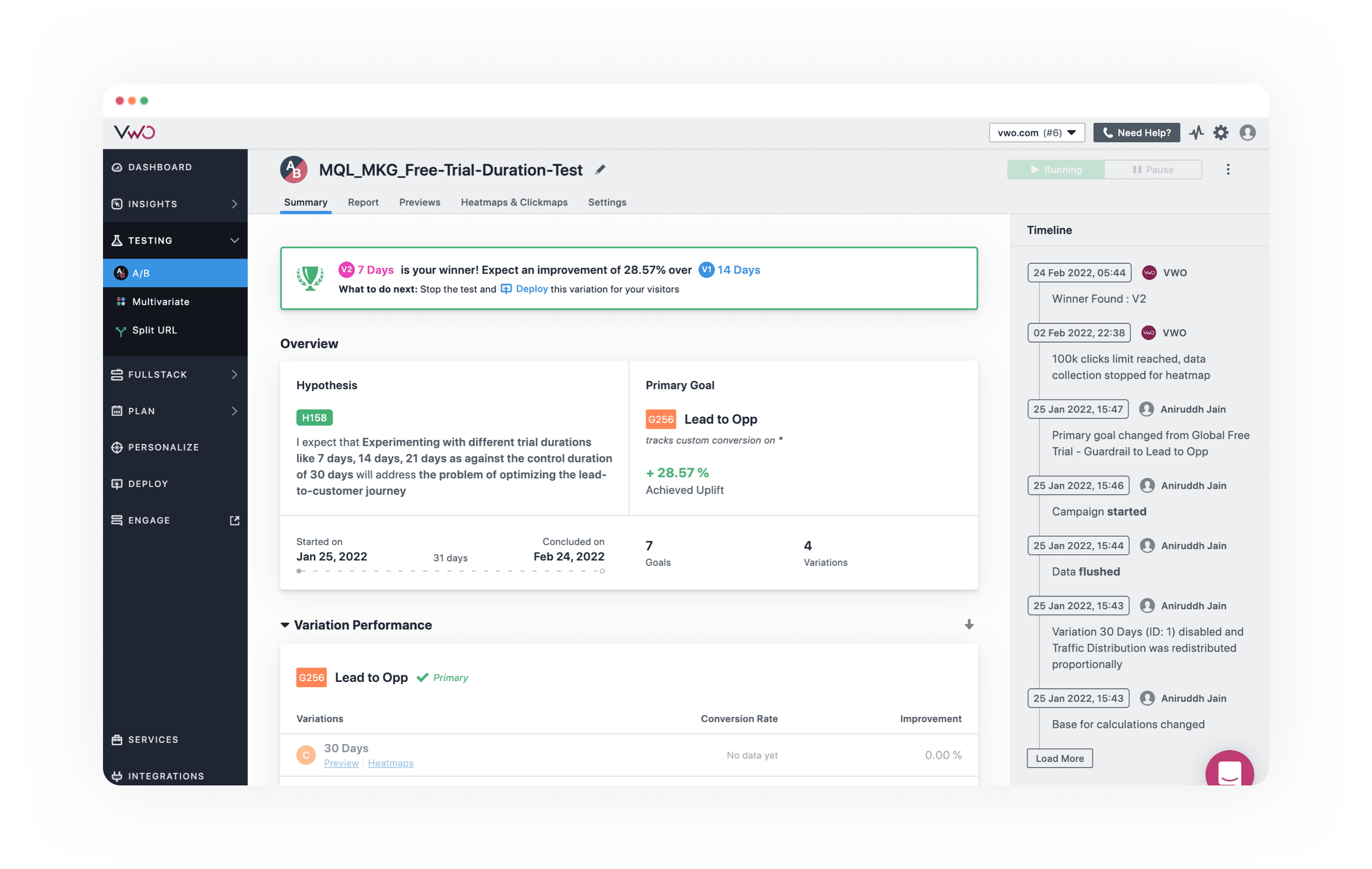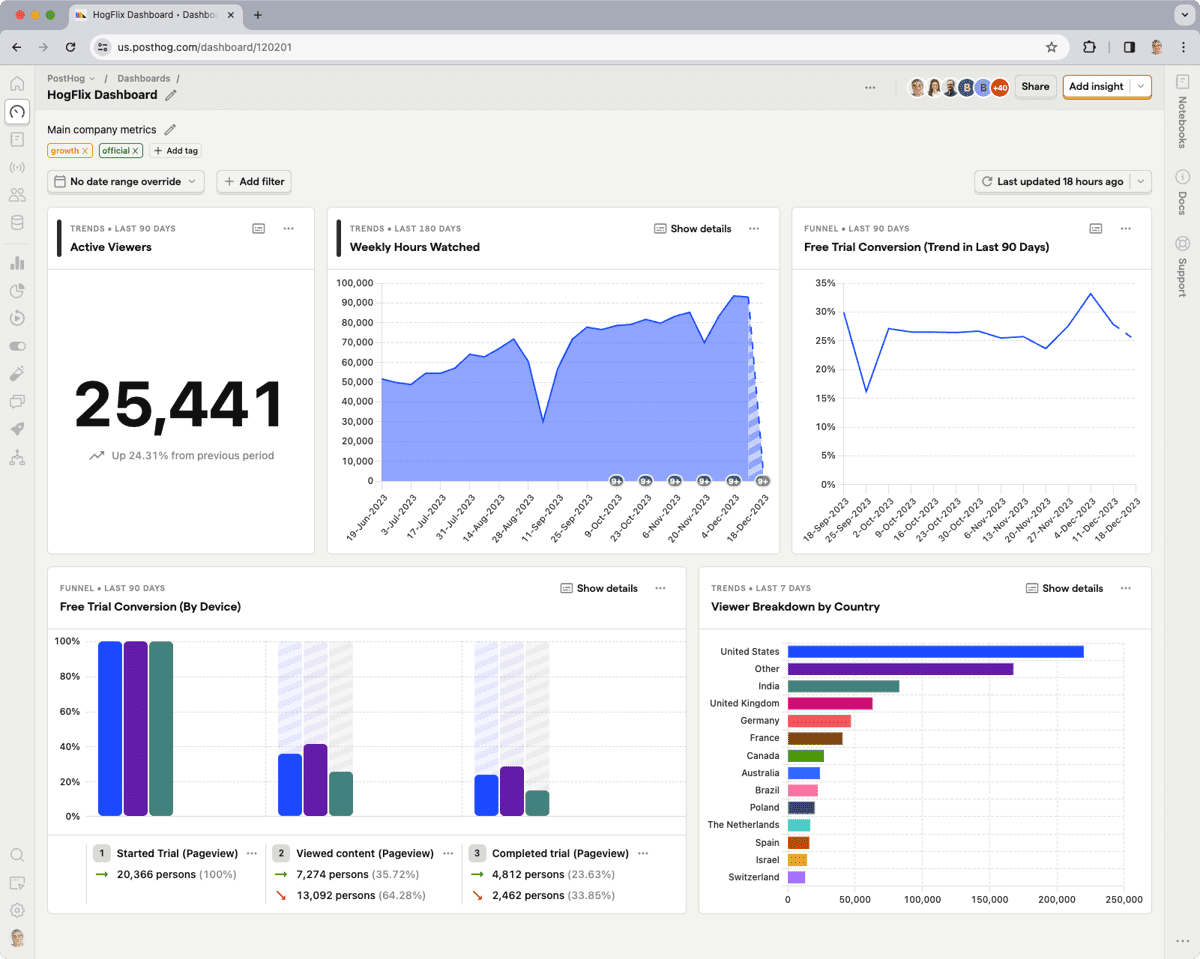Are you looking to optimize your website's performance but unsure if VWO is the right choice? You're in luck! We've compiled...

How to Use Predictive Customer Analytics For Max Conversions
Business gurus always talk about the importance of collecting customer data. But aside from addressing current issues with the information you gather, what do you do with all that historical data?
If you haven't already, it's time to introduce a predictive analytics process to your business operations. With a good breadth of customer data to work with (and accurate predictive models), you can come up with better business decisions based on what future customer behavior is likely going to look like.
However, there's a lot more to this process than meets the eye. We'll walk you through the essential concepts, benefits, and real-world applications so you can stop relying on intuition and start maximizing your data.
What is Predictive Customer Analytics?
Simply put, predictive customer analytics is all about using your customers' past actions to guess what they might do next.
Crunching the numbers on past interactions can yield surprising insights into customer motivations. You might just discover which products are on the cusp of becoming customer obsessions or which customers are wobbling on the fence.
Tailor-made marketing, exceptional customer service, and sound business decisions are all within reach when you get it right.
How Can Businesses Use Predictive Analytics?
Once you have enough historical data to analyze, predictive analytics can help take your business to the next growth stage. Here are several ways you can put this powerful tool to work:
Improve Marketing Strategies
Analyzing customer data helps you understand what your customers like so you can tailor your marketing campaigns to really hit home. A deep dive into customer data brings patterns to the surface, plain as day. Consumer psychology is all about cracking the code of human behavior when it comes to buying and selling—what we say, do, and feel as customers.
This means you’ll know what messages click best with different groups (all with varying customer behavior patterns). For example, some people might love getting emails, while others might be more into social media ads.
Plus, predictive analytics can tell you the best times to reach out. When you know when your customers are most likely to pay attention, you can schedule your campaigns to hit at just the right moment. This increases the chances that your messages will be seen and acted on.
You’ll also figure out which channels work best for your audience. If you're feeling overwhelmed by the sheer number of marketing options, here's a secret: you don't need to do it all. By zeroing in on the right channels—think email, social media, or direct mail—you can simplify your strategy, save resources, and actually see some results.
Upgrade Customer Service
Predictive analytics can help you fix issues and meet customer needs before they even become apparent. You can anticipate what your customers might need help with and reach out with support or advice at just the right moment.
For example, suppose the data suggests that a particular product tends to need support after a few months. In that case, you can proactively contact customers with maintenance tips or support options before they encounter any issues.
Anticipating customer needs pays off in spades: it eradicates frustration and replaces it with loyalty that genuinely sticks.
Maximize Sales
Ever wondered how you can know which customers are about to make a purchase or what products they’re interested in? What if you could put your sales team on the scent of the most eager buyers, guiding them toward the products that spark the most interest?
By doing so, you'll be priming your sales engine to drive more conversions and realize bigger returns.
Imagine being able to sift through your customer data and spot clear trends—like who’s been checking out certain products or who keeps coming back to the same item but hasn’t made a purchase yet.
Predictive analytics helps you understand these patterns and even pinpoints the optimal times to reach out to these customers, perhaps with a personalized offer or a timely nudge that might just close the sale.
Reduce Customer Churn
Predictive data analytics acts like an early warning system that flags customers who might be on the verge of leaving. Armed with this knowledge, you can take proactive steps to keep them on board and prevent churn before it happens.
Think about it: predictive analytics can help you understand not just who might leave but why they might go. Maybe they've been experiencing service issues, or perhaps they haven’t engaged with your brand in a while. Whatever the reason, once you know, you can tailor your approach to address their specific concerns.
However, it isn't just about throwing discounts left and right. It's about meaningful engagement. You could set up automated triggers for personalized emails that check in with your customers, ask for customer feedback, or offer them content that matches their interests.
Or, why not invite them to exclusive customer events or give them first dibs on new products? These gestures show that you value their business and are committed to keeping their experience fresh and exciting.
Optimize Your Inventory Management
Here's a huge benefit for eCommerce businesses. Picture this: you've got a crystal ball that shows you what customers will crave next season. That's basically what happens when you crunch sales data, seasonal ups and downs, and broader market vibes. The result? You can prep for the products that'll fly off shelves.
So, you can make sure your most popular items are always available while also preventing the buildup of unwanted stock that ties up capital.
Go beyond simply tracking stock levels and use predictive analytics to stay one step ahead of the competition, fine-tuning your promotional strategies and pricing tactics to maximize impact. Identify your biggest sales opportunities with ease—and decide when to cut prices on sluggish items or launch a focused promo to get products flying off the shelves.
Are There Downsides to Using Predictive Customer Analytics?
Sure, predictive customer analytics can be super helpful, but it's not perfect, especially when we talk about accuracy.
Predictive analytics uses data to guess future behaviors, but these predictions are only as reliable as the data you feed into them. If your data is outdated, incomplete, or biased, your predictions won't be spot on, which means you might end up making decisions based on faulty insights. Not ideal.
There's also the complexity of human behavior to think about. One of the big hurdles with predictive customer analytics is that it doesn’t always get human behavior right. The thing is, human actions are influenced by a whole mix of factors. Emotions, personal motivations, and current circumstances that predictive algorithms often can't fully grasp.
It's a tough reality: despite having access to highly advanced analytics tools, we still can't always predict how customers will act when they're faced with real-life situations.
Another snag is the ongoing need for fresh, updated data. Predictive analytics isn't a set-it-and-forget-it kind of tool; it needs a steady stream of current data to work well. Many SaaS businesses find keeping their data sets consistently updated to be a real chore. Without regular updates, the predictions you get from the tool can end up being way off base.
Best Ways to Put Predictive Analytics into Practice
Now that you know how predictive analytics can benefit your business, the next step is to find out how you can put it into practice.
Of course, using predictive customer analytics can look different, depending on the type of business operations you have, but there are several strategies that should apply to most businesses:
1. Start with Solid Data
The foundation of any effective predictive analytics strategy is high-quality data. Think of it like building a house—if the foundation isn't solid, the whole structure is shaky. So, before you jump into forecasting and making predictions, take a serious look at the data you're using.
Data needs to be clean, which means free from errors and inconsistencies, comprehensive, covering all necessary aspects of the information you need, and up-to-date, reflecting the most current situations and trends.
If your data is lacking in any of these areas, your predictions might be off and lead to decisions that could steer your efforts in the wrong direction.
2. Set Specific Goals
You need to know what you want to find out before you analyze historical data. Are you looking to cut down on customer churn, dial in your sales targeting, or maybe you want to take your customer service to the next level? With specific, measurable goals, you create a focused roadmap for your analytics projects.
For example, instead of a broad goal like "improve customer satisfaction," aim for something more tangible and quantifiable, such as "increase customer satisfaction scores by 10% within six months." This approach directs your efforts more efficiently and provides a clear standard for measuring outcomes at the same time.
3. Keep Refining Your Models
Keeping your predictive analytics sharp means regularly updating them as things change in the business world. You've got to keep feeding them fresh data and tweaking them based on what's happening right now.
Whenever you roll out your models, you'll see how they're doing. Take this feedback and use it to make your models even better. Maybe tweak a few settings, throw in some new data, or even rethink a model if it’s not working. Keeping your analytics up-to-date like this helps ensure they stay on point and useful.
4. Choose the Right Tool(s)
Picking the right predictive analytics tools is key to getting the insights you need to optimize the customer experience.
When you're shopping around for tools, think about what fits your business just right. Consider things like the size of your business and what you actually need the tool to do. You'll want something that can grow with you as your business expands.
For instance, a tool like FullSession can be a great choice if you're looking to understand how users interact with your website, which can help you modify things to improve their experience and up your conversions.
Make sure whatever tool you pick is easy to use and meshes well with the systems you already have in place. It’s also a good idea to check out the kind of support and community the tool offers—having help available when you need it can be a real lifesaver.
Dive Into Predictive Data Analysis With FullSession
Leveraging predictive analytics can help you hit multiple goals at once, whether that be increasing customer loyalty, optimizing the customer journey, or tailoring your offerings based on customer preferences.
But how do you accomplish that long list of objectives without stretching your resources too thinly? The solution is simple: FullSession. Here's a sneak peek at how this powerful platform can help you collect the data you need to predict future outcomes:
- Heatmaps: FullSession's heatmaps give you a colorful visual map of where users click, scroll, and linger on your site. With these patterns, you can pinpoint potential trouble spots or discover the elements that really pull users in.
- Session replays and recordings: Imagine being able to shadow your website visitors as they navigate through your site. Session replays and recordings let you do just that, offering a playback of real user interactions. You'll see where users flourish and where they falter, which helps you get direct insights that help you tweak your site to make it more intuitive and user-friendly.
- Customer feedback tools: FullSession also equips you with tools to snag direct feedback from your users and understand the why behind user actions, spot friction points, and collect user-improvement suggestions.
FullSession Pricing Plans

The FullSession platform offers a 14-day free trial. It provides two paid plans—Basic and Business. Here are more details on each plan.
Here are more details on each plan.
- The Starter plan costs $39/month or $32/year and allows you to monitor up to 5,000 monthly sessions with up to 6 months of data storage.
- The Business plan costs $75/month or $60/year and helps you to track and analyze up to 100,000 monthly sessions with up to 12 months of data storage.
- The Enterprise plan has custom pricing and offers customizable sessions plus full access to all features.
Install Your First Predictive Data Tools Right Now
It takes less than 5 minutes to set up your first tools to collect the data and predict future outcomes, with FullSession, and it's completely free!
FAQs About Predictive Customer Analytics
How accurate is predictive analytics?
Predictive analytics can be incredibly accurate, but like anything dependent on data, its precision relies on the quality and breadth of existing customer data you feed into it. If your data is solid, your predictions will be too. However, it's important to remember that no tool can predict the future with 100% accuracy—there's always room for surprises!
Can small businesses benefit from predictive analytics?
Yes. You don't need big data to make big moves. Even modest datasets can uncover trends and opportunities that might otherwise be missed. For small businesses, this can mean a sharper competitive edge and a better understanding of what your customers want.
Is predictive analytics expensive to implement?
It can be, but it doesn't have to break the bank. The key is to start with what you need and scale up as you grow. There are plenty of cost-effective tools and technologies available that can match your business’s size and budget. Plus, the return on investment, in terms of insights and efficiency, often outweighs the initial costs.




